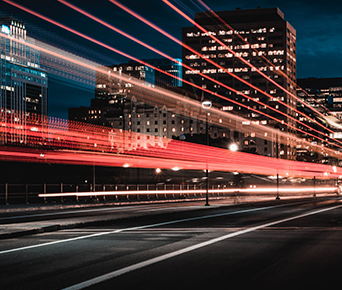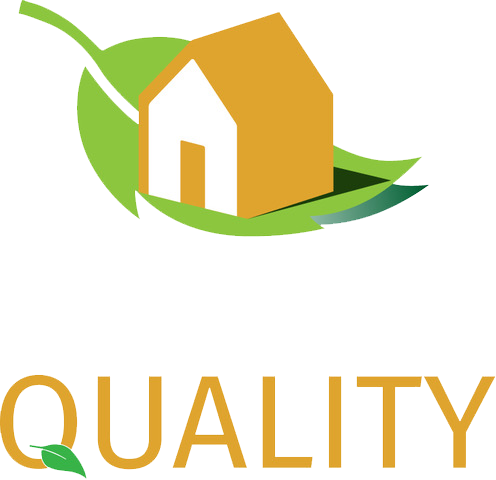Achieving Net Zero on Commercial developments
The goal of achieving net zero carbon on commercial developments is an essential part of the UK’s plan to mitigate the impacts of climate change by reducing the nation’s carbon footprint. It requires a comprehensive approach encompassing sustainable design, energy efficiency, renewable energy, and the reduction of embodied carbon.
Commercial buildings operate differently from residential dwellings and have different energy needs – something that needs to be reflected in the design process. Here are some key strategies for achieving net zero carbon on commercial developments:
Sustainable Design and Energy Efficiency
Sustainable design is an approach to designing and constructing buildings that aims to reduce their environmental impact first and foremost by reducing the building’s energy needs.
This is in line with the Energy Hierarchy, which is widely used as a guide for the transition towards a sustainable energy system. The most important goal is minimising energy consumption. Second in order of importance is ensuring the efficiency of clean energy supply. Next comes the use of renewable sources, and finally the least desirable option of offsetting carbon emissions that can’t otherwise be avoided.
One example of sustainable design at work is considering the building’s orientation. Along with the positioning of windows, this principle can make the maximum advantage of natural light and ventilation. It goes without saying that a building with good exposure to sunlight will have less need of artificial lighting, for example. The use of natural or recycled materials, as well as the incorporation of green spaces, is another way that the principle of sustainable design can be translated into the real world.
High-performance building envelopes – a physical separator between the interior and exterior environments of a building – are also an important tool to reduce energy demand. That’s because they minimise heat loss in the winter months as well as heat gain in the summer. This reduces the need to use HVAC (heating, ventilation, and air conditioning) systems, which are a particularly prominent source of energy consumption in commercial buildings: when was the last time you stepped in a building without some form of air conditioning in function?
Design can also be adapted to use materials which are readily available locally, reducing the need for long-distance transport. Making this a focus ensures that the building’s embodied carbon emissions – the emissions associated with materials and the construction processes – can remain low throughout the entire lifecycle of the building.
Once energy needs have been reduced, there is no shortage of energy-efficient appliances to minimise the carbon footprint as far as possible – from LED lighting, which uses significantly less energy than traditional lighting systems, to the use of geothermal or air-source heat pumps for the HVAC system. Lighting can also be a significant source of energy consumption in some commercial buildings: stores, for example, do need to keep lights on; flipping the switch when a room is not in use, as is common in dwellings, is often not an option.
Renewable Energy
The use of renewable energy sources within commercial developments is the next step towards achieving net zero. Renewable energy sources, such as solar panels, wind turbines, and geothermal systems, can provide a significant portion, if not all, of a building’s remaining energy needs.
Switching to renewables is more convenient now than ever before. In April 2022, the UK government announced plans to increase the production of clean energy in the UK to respond to the energy supply crisis caused by the Russian invasion of Ukraine. In doing so, the government stated that, “Prices of renewables have been consistently decreasing, with the price of offshore wind dramatically falling by around 65% since 2015, onshore wind prices down 50% since 2013, and residential rooftop solar panels are now less than 50% the price they were a decade ago”.
Plus, the Government added that a temporary VAT cut on the installation of energy efficiency projects such as solar panels, insulation and heat pumps will remain in place until 2027.
RenewableUK’s CEO Dan McGrail said at the time,” The renewables industry is ready and able to work with the government to deliver the ambitions set out in the new Energy Security Strategy.
“Renewables can deliver new, low-cost power quicker than any other option and wind will be at the heart of a secure, affordable net zero energy system. Scaling up our ambitions for renewables, and increasing speed of delivery, will help us cut bills and be more energy independent.
“The sector is investing tens of billions of pounds in cheap wind power, as well as cutting-edge green hydrogen and floating wind technology, so that the UK can reduce our dependence on gas. Green investment is creating tens of thousands of jobs across the UK to support levelling up and reaching net zero faster.”
Embodied Carbon Reduction
As previously discussed, embodied carbon refers to the carbon emissions associated with the construction, operation, and end-of-life of a building. This includes products and materials used, their transport, the construction work itself, maintenance, and replacement, and eventually the building’s disposal. Perhaps unsurprisingly, the building’s superstructure alone accounts for almost 50% of the total embodied carbon emissions. Reducing embodied carbon is critical to achieve net zero carbon on commercial developments, and here we come full circle to where we started: sustainable design is vital to achieve this.
Things to keep in mind during the design phase in order to keep down embodied carbon emissions include material selection and construction methods. As previously stated, choosing low-carbon materials – such as timber or recycled steel – can help to reduce embodied carbon, and sourcing them locally will keep down emissions caused by transportation to site.
Some construction methods have a smaller carbon footprint than others, too, and should be considered where possible. For example, the use of prefabricated or modular construction methods can help to reduce embodied carbon by minimising waste and reducing the energy required for on-site construction.
It would be a mistake to think that work is done once the building is complete. A life cycle assessment of the building can help to identify opportunities to reduce embodied carbon throughout the building’s life cycle. It will also serve as a benchmark for future monitoring and reporting on the building’s energy consumption, carbon emissions, and more. Continuous monitoring ensures that the building remains as efficient as it was when first constructed and helps identify areas in need of maintenance or improvement.
Tags: net zero, commercial construction, commercial developments,
How Can Sustain Quality Help My Organisation?
When an organisation turns to us at Sustain Quality, they gain access to a team of professionals that are dedicated to providing services that help save on energy costs.
Sustainability consultants are incredibly knowledgeable in the steps that need to be taken to create net-zero buildings for organisations of all sizes.
Some of the assessments that may be used to best determine how you can meet net-zero energy include:
A net-zero building is the epitome of a high-quality building and property organisation. Our dedicated team offers sustainability consulting Nationwide that will help you achieve your sustainability goals.
We can help your organisation reduce carbon emissions and meet other environmental initiatives.





